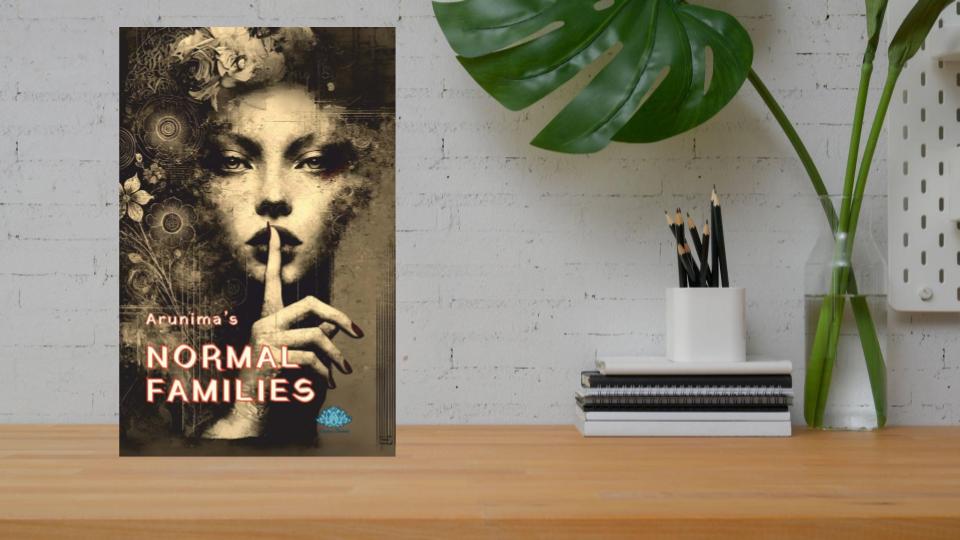“Normal Families” by Arunima G is a journey into a dystopian world which is deeply rooted in the life around us and finds its plotline amidst the routine of what would otherwise seem a ‘normal family.” Featuring a series of characters coming from different walks of life, “Normal Families” shows the dark side of society where the victims are always the innocent ones, and they are the ones who retaliate in their own ways when they are robbed of their innocence. At the same time, the featured characters have their own unique personalities, depth, pain, and darkness, but what remains common in them is the fact that they have all been robbed of their innocence at one point or another in their life.
The author explores a plotline that comprises twists and turns at different steps, and yet, it takes detours to explain the stories of the people who make their appearances at any point in the novel. The complexity stems from the long-term connections that characters form and how their lives intertwine at different points, yet remain distinct. All of this happens without losing focus on the central plotline that runs till the end to make absolute sense. Arunima shows precision, the exact attention to detail as required and dives into the life of the characters without going in depth that may not be relevant. Her craft stands out through a completely third-person viewpoint where characters do get their turns to speak, but they continue to be presented through the eyes of the narrator.
A noteworthy feature of “Normal Families” is the thematic concerns it has. The world featured in the novel is thoroughly dystopian, run by assassins who are more people with feelings and less of heartless killers. There is an accurate justification of why they are the way they are, and as a result, they earn the sympathy and respect of the readers in place of hatred or anguish. The author ensures that their stories are heard with patience, and the readers understand where they are coming from. Even characters making brief appearances of one chapter or so make an impression that impacts the events that occur in the book.
While “Normal Families” features violence, bloodshed and heart-wrenching scenes, it shows the typical features of a dystopian world, which is rooted in the present-day world to a large extent. Whether it is the story of Kabir, Mukta, the young Manu, or even pawns in the game like Ketki, each has a unique perspective, a distinct event that changes their entire life altogether. It also leaves plenty of hints of something similar to the events in the novel occurring in real life in some corner of the country or the world.
“Normal Families” as a title resonates more of a paradox to what may seem normal in today’s world, but normal in the dystopian world. It is all about how what seems unusual for the readers is normal for the families featured in the novel. The families featured in the story are not the normal families, but in their world, they are perfectly normal with broken homes, traumatic childhoods, emotional shutout, unstructured family trees, and children being born in unusual circumstances, which comply with the norms of normalcy. Both men and women in these families are normal for each other, even though they may not be normal for the readers.
Readers who want to read a thriller that is more about exploring the bigger picture while remembering every small detail they read earlier should read “Normal Families.” The book features many intricate details that together contribute to the larger plotline. The author gives attention to every single detail and makes sure the readers remember it much later after it has been mentioned. Readers would surely enjoy the suspense that the author builds up till the last pages, only to unveil the big picture towards the end.


